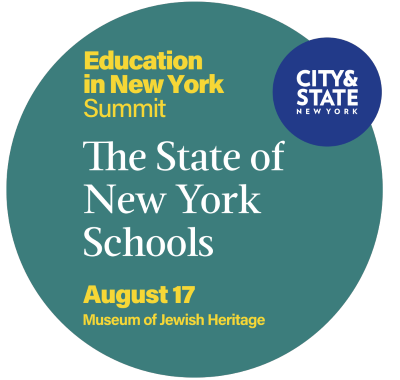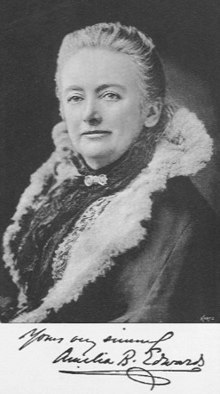
On August 17, City & State held a New York State education summit at the Museum of Jewish Heritage in lower Manhattan. The opening keynote was delivered by Dr. Betty A. Rosa, Commissioner of Education & President of the University of the State of New York. The presenters on various panels included among others:
John C. Liu, Chair, State Senate Committee on New York City Education
Michael Mulgrew, President, United Teachers Federation
Rita Joseph, Chair, New York City Council Education Committee
Toby Ann Stavisky, Chair, State Senate Higher Education Committee>
Eric Dinowitz, Chair, New York City Council Higher Education Committee
Shelley Mayer, Chair, State Senate Education Committee.
In addition, state and school district leaders along with industry experts populated the panels and the audience.
The purpose of this blog is not to summarize what was discussed, but to point out what was not. Where were local and state history in the daylong session?
I will confine myself to two history events that occurred just scant yards away from where the education summit was being held – Lafayette’s return to the United States beginning in 1824 and the Mente departure from the United States in 1841. Both events were not only local events but state and national events. The Mente are better known as the people from the Amistad after whom some New York State commissions are named; Lafayette has given his name to streets, villages, towns, and cities in the state as well as being the subject of statues and monuments. I just attended a Lafayette monument rededication in Fishkill, New York on August 27, for example.
LAFAYETTE
President James Monroe invited the Marquis de Lafayette to return to the United States in 1824 during a bitterly fought presidential election year. The August 17 date of the Education Summit was on the 199th anniversary of his arrival in New York. If the same event is held next year, it will be during the bicentennial.
The American Friends of Lafayette (AFL) is planning a nationwide celebration of Lafayette’s return in 2024-2025. There were only 24 states then so the task is not quite as daunting as it might seem at first glance. Next year, August 17, 2024, is a Saturday. If the summit is moved up one day to Friday, August 16, 2024, it will be meeting during the 200th anniversary parade from Castle Clinton, an historic site in its own right, to the City Hall. Perhaps City & State will schedule a break during the summit so the participants in the education summit, can participate in the parade as well.
During his 13-month visit, Lafayette traveled from Manhattan through what is now the Bronx to Westchester on his way to Boston by horse and carriage. He also traveled by steamboat on the Hudson. Finally, near the end of his visit, he traveled along the route of the soon-to-be-opened Erie Canal, another bicentennial event of local, state, and national significance sure to be overlooked in any education summit.
In short, the Lafayette Bicentennial is symptomatic of the absence of local history in the planning for the future.
AMISTAD
The Amistad name is well-known in state education circles. Indeed, it may be difficult to keep track of all the various commissions and legislative bills.
Amistad Commission – There is an effort by the Department of State to resurrect the defunct commission that has been inactive for years and the source of multiple blogs on my part castigating it for its shortcomings. I attended the second meeting of the new commission at Philipse Manor Hall in Yonkers earlier this year and spoke with some people who attended the third meeting in Albany. These meetings seem to be more of presentations and not designed to elicit feedback from the community. I am not sure what its real objective or plan is for this Commission or if it ever will amount to more than the earlier attempt did. I could be proven wrong.
1. Amistad Relocation Legislation (S1032) – An apparently failed effort this past legislative session to transfer responsibility of the Amistad Commission from the Department of State to the Education Department. The Commission such as it exists does belong in the Department of Education and not the Department of State.
2. Amistad Curriculum Legislation (S5334) – An apparently failed effort this past legislative session involving the curriculum and more of a revision than a simple relocation of an existing commission.
3. Reparations (A7691) – An apparently successful bill passed in the waning hours of the current session and to be sent to the Governor for signing.
4. 1827 Bicentennial Freedom Commission – a bill which never was introduced, might get lost in the crowd if it was introduced, and might suffer some of the same staffing issues as the American Revolution 250th.
The history of the Amistad is closely connected to the Education summit as well. The ship itself arrived in Culloden Point in Montauk on August 26, 1839.On August 26, 2023, the Eastville Community Historical Society, the Southampton African American Museum, and the Montauk Historical Society dedicated a State Historic Marker to the people on La Amistad. They conducted the ceremony as part of a weekend of remembrance.
The next day, August 27, the John Jermain Memorial Library in Sag Harbor hosted a panel discussion about the people of the schooner La Amistad, illustrated by scenes from Steven Spielberg’s landmark film, Amistad. This screening and forum was moderated by Dr. Georgette Grier-Key, executive director of the Eastville Community Historical Society, and reflected on the Amistad story both in its historical context and in relation to the echoes that are still felt today throughout our nation.
The departure also is a New York story. On November 25, 1841, the Mende set sail back to Sierra Leone from New York. That date is the anniversary of Evacuation Day ending the British occupation of New York City in 1783. The plaza in front of the Alexander Hamilton Custom House, a short distance from the Education Summit, has been renamed Evacuation Plaza.
By coincidence, Fraunces Tavern, also located near the site of the Education Summit, recently opened a new exhibit on the Birch Trials. They are about the Black Loyalists who joined with the British evacuating New York and the United States for Canada and eventually to Freetown, Sierra Leone. At a recent history conference, I asked a presenter if she knew if the Mende had known about these arrivals from the United States, but she did not know.
Perhaps I should ask Frances Tiafoe the son of Sierra Leone immigrants, at the U.S. Open. Last year when I saw him play, I had no idea who he was.
But I digress. A teacher is sure to red-mark some of these comments.
It is not just that local history is all around us, it is all around the very place where the New York State Education summit is held. Maybe next year, there will be a place for local and state history in the education summit as well.






Wouldn’t it be nice if those of us on the ground who dedicate our lives to researching and preserving and promoting NYS history were included. A sad commentary on the thinking of those vested with authority.
The Regents have public meetings in Albany monthly. Perhaps you could attend one.
2023 Regents Meeting Dates: Seminar Room, 5th Floor
October 16 – 17 (Monday and Tuesday)
November 13 – 14 (Monday and Tuesday)
December 11 – 12 (Monday and Tuesday)
Peter
All history is local. Local is the level that matters most. Its hard to centralize. Few teachers are trained in it. Do any teacher training programs ever emphasize local resources as a pedagogical resource. Of course not. It is – in my view – the difference between top down and bottom up and really who honestly cares about mastering some dogmatic national narrative that (inevitably) preferences big vs small, urban vs rural, politics vs lifeways and culture – on and on. It never feels like the places and pasts most people know and care about.
Thank you for your continuing passion for the local. Throughout the career (I am now retired from) it was always hard to explain what I do and value. I do history but mostly not national or political history. I study and research art – but artifacts more than “fine art” and in all my work the emphasis has been on the local histories of places I care about and made it my business to study.
cheers
Bill Hosley
Until the people who make the rules change them, it will be difficult to make local history more prominent in teacher training and in the classroom.